
Voyager is one of the more understated tracks on Discovery, it’s built around a simple four-bar loop with no vocals or lead melody. What it lacks in melody it makes up in groove, with a funky bassline and smooth guitar loops over a classic French House beat that just feels good.
Daft Punk told The Face in 2001 that Voyager was salute to the bassline, and its tightly sequenced bassline drives the entire track. Halfway through, the arrangement shifts with the addition of a harp-like synth line, giving it a baroque-inspired touch that runs throughout Discovery.
This article breaks down how Voyager was made. I’ll look at the music theory, synth patches, and production, using my full remake as a reference. It’s a deeper dive into a track I first covered in my 2021 article on Discovery, and the first in a new series of updated Daft Punk remakes.
Firstly, here’s my new remake, which doesn’t use any samples from the original song:
Voyager is built around a four-bar loop that repeats the same chord progression: D/E | C♯m7b5(add11) | Cmaj7 | C/D throughout. These chords loosely suggest the key of E minor, but what makes the progression work, and keeps it from feeling static, is a couple of clever harmonic tricks. For an instrumental track built entirely around a single loop, interesting harmonic movement is essential.

This article can be viewed with either accompanying music notation or MIDI piano roll diagrams.
The first thing to notice is the use of the slash chords D/E and C/D, which are triads played over non-root bass notes. For example, D/E is a D major triad (D–F♯–A) over an E bass, and C/D is a C major triad (C–E–G) over a D bass.
These voicings have a suspended quality because, relative to the bass note, they don’t have a 3rd. Instead, they include a 4th, a minor 7th, and a major 9th, intervals that don’t define a clear major or minor quality. You could also think of them as E11 and D11.
Both slash chords follow the same formula: a major triad over a bass note one whole step above. This is a popular chord in jazz, funk and soul music, and has a smooth, sophisticated sound.

The shift from C#m11 to Cmaj7 is striking because it swaps one version of the E minor scale for another, moving from the brighter E Dorian sound (which includes C♯) to the darker E natural minor scale (which includes C natural).
This unexpected change in tonality, even though it’s just one note, adds colour and surprise. What keeps the change from feeling jarring is that both chords share two notes, B and E, which help tie them together.
The main chord sound in Voyager was most likely recorded using a Roland Juno-106, which Daft Punk used heavily on Homework (see my full article on Homework synths). For this remake, I used TAL U-NO-LX, a software emulation of the Roland Juno synths, which nails the tone and feel of the original hardware.
The patch uses a single sawtooth wave with both filters slightly rolled off to remove some of the highs and lows. The main filter cutoff is set to about 4, with no keyboard tracking, and the envelope amount is set to around 2.7. The envelope has a soft attack, which helps it fade in without being too punchy.
I used the Chorus I effect for some light modulation, and added a Phaser-Flanger device in Flanger mode in Ableton with the Dry/Wet set to 32% for some extra movement.
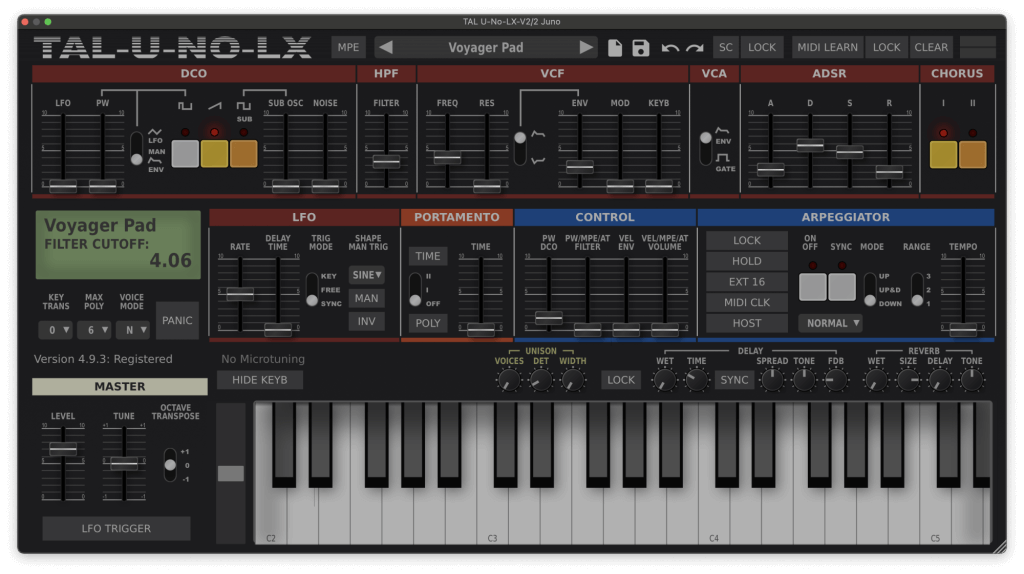
There’s also a second layer that sounds like sampled strings, possibly from a rompler synth, adding high-end sheen to the main pad. I used the Adagio Expressivo patch in Omnisphere for this, tweaking the amp envelopes to reduce the attack and release for a more immediate feel.
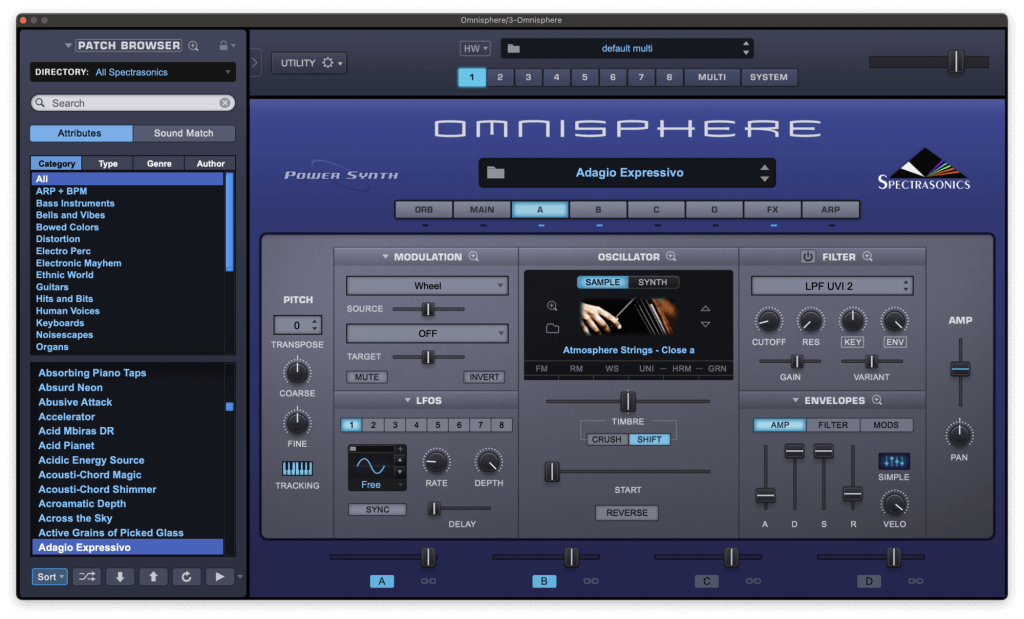
Where the pads leave space, the bassline fills it. It’s a tightly sequenced bass part with funky octave jumps, just like you’d play on a bass guitar. Many of the notes are sequenced with short note lengths, which helps to create space between phrases, which gives that funky feel.
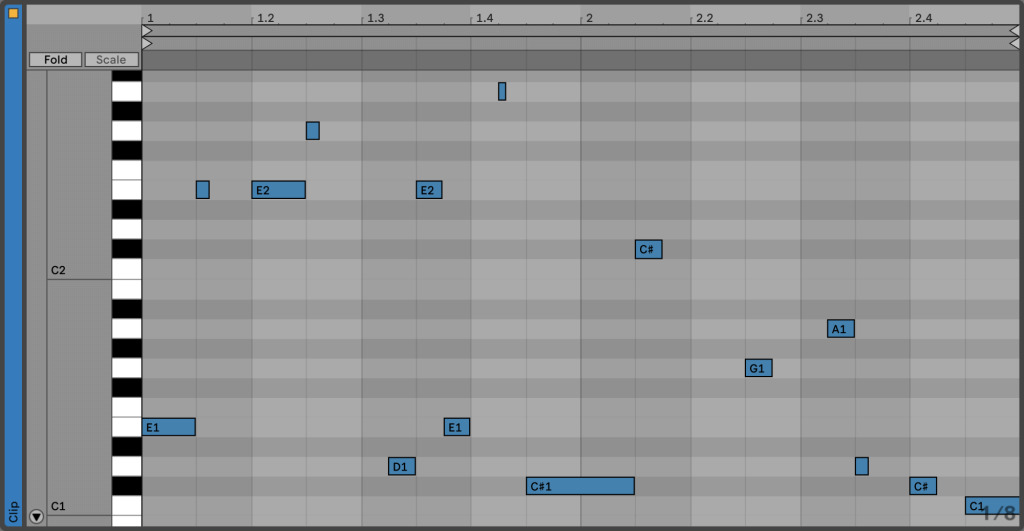
The sound itself is simple: the secret sauce is high filter resonance. In TAL U-NO-LX, the filter is set to around 3, and there’s a small amount of filter envelope to add a small amount of movement. For effects, I used Soundtoys Decapitator with the Drive set to 3 to add light saturation.
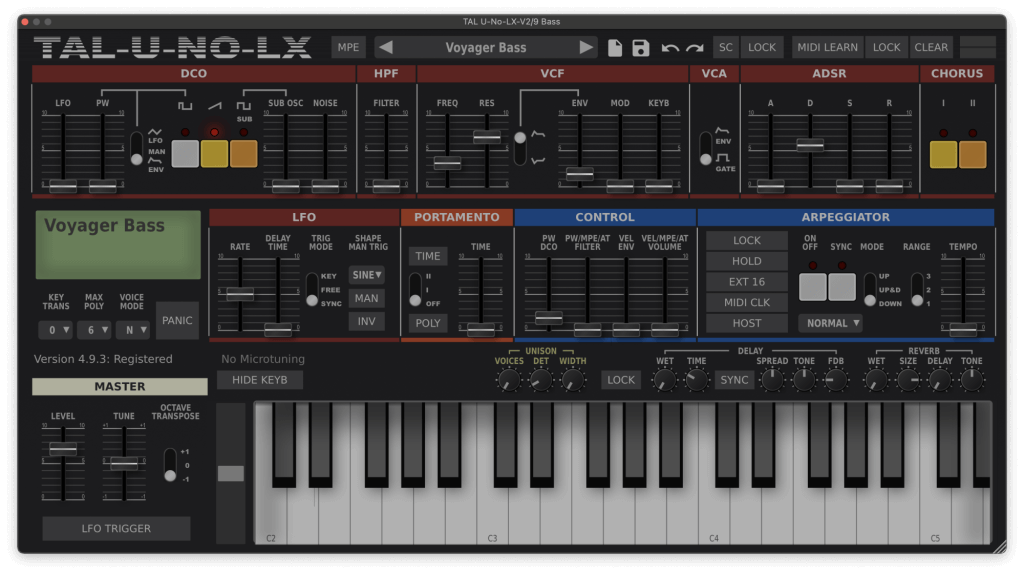
Halfway through Voyager, most of the instruments drop out and a harp-like synth comes in, playing a fast, intricate arpeggio. This creates a dramatic shift in pace, and the harp sequence follows the basic chord progression, so it flows seamlessly when the full arrangement returns.
This is a favourite Daft Punk trick; something similar happens in Superheroes, where the main sample cuts out and a series of ascending synth arpeggios carry the rest of the track.
Knowing some theory makes parts like this easier to piece together, since the sequence needs to work with the underlying chord progression. Apart from a few passing notes, the arpeggio mostly outlines the chords Em | C♯dim | C | D (a simplified version of the main progression), so when the synth chords return, the harp arpeggios fit perfectly on top.

The harp sound comes from the Yamaha DX100, specifically patch 20 Soft Harp from Bank 1A. I actually converted the DX100 factory bank for Arturia DX7 V earlier this year, and it’s available as a free download. I’ll include a link at the end of the article. For my remake, I added EQ to cut the low-end and boost the highs along with some chorus for stereo width.
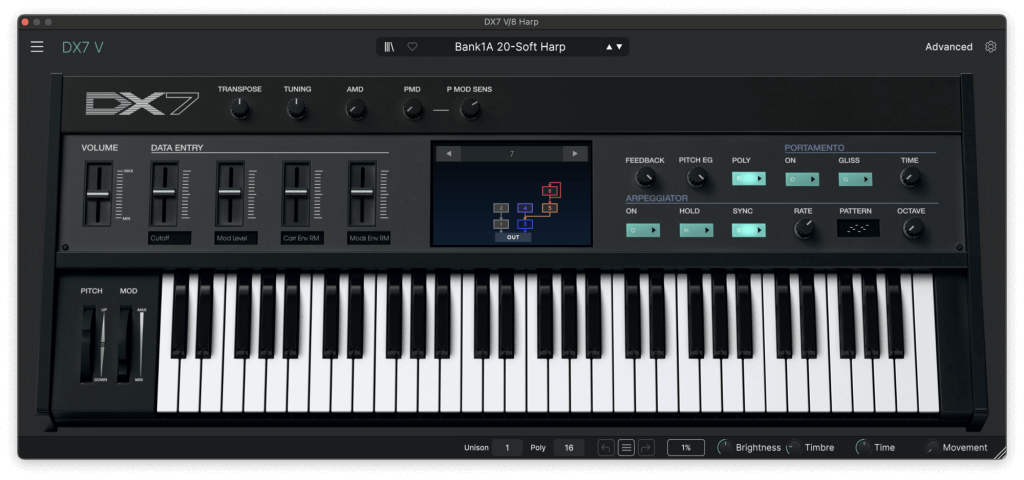
As well as sampling old records, Daft Punk also recorded their own parts for Discovery, including the three funky guitar loops in Voyager. Other tracks on the album feature guitar too, for example, there’s a smooth solo on Something About Us, possibly recorded by Thomas Bangalter himself (who’s a solid guitarist) or by a session player.
In Voyager, there are three guitar parts playing throughout most of the song. One is panned left, one right, and a third sits down the center. To recreate these tracks, I recorded my own loops using my Fender Vintera II Stratocaster through an Xotic XW-1 Wah pedal, dialed in with low resonance and subtle movement to keep things smooth.
In Ableton Live, I kept the recordings fairly dry, adding only EQ and compression for tone shaping and balance.
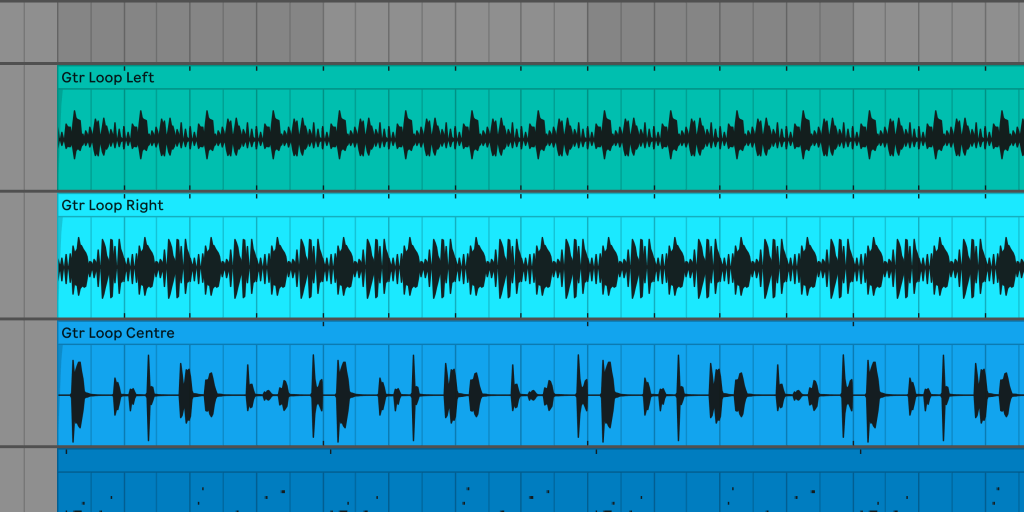
One of the standout elements in Voyager is the kick drum. It’s mixed right up front and has a hard, punchy character with a lot of treble. There is some classic French Touch sidechain compression on the bass, synth and guitar to help the track ‘pump’ alongside the kick. For my remake, I used very heavy sidechain compression, with up to -11.5 dB gain reduction, and a fast attack and release.
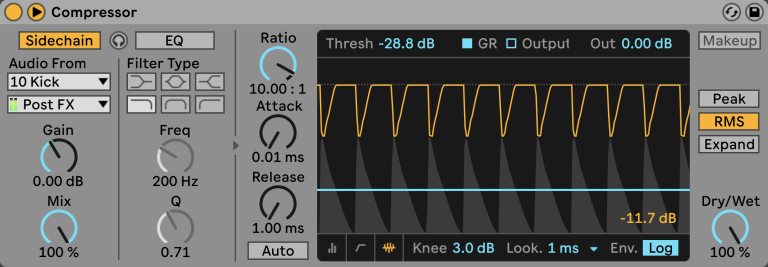
To add energy, I layered in some percussion loops, including a shaker panned right and a percussion loop panned left.
Many of the tracks are wide and stereo, possibly a result of the mastering process on the original. In my remake, I used tools like Ozone Imager to create a similar effect, even on elements like the bass, which isn’t fully mono in the original mix. I also applied a low-cut EQ to the synth/guitar group track to make extra space for the bass.
Header artwork by Olya Makar
Great Work as always. Dug the explanation and content. Appreciate you giving to the community in this way.
Appreciate that, thanks for reading and for the kind words.
FWIW, an alternative way of spelling the chord progression for the pads is:
Dadd9/E | F#7sus4/C# | Cmaj7 | Cadd9/D
I was initially confused by the mention of 11th chords, because the notes [D F# A E] are literally a D major with the *ninth* (E) added (in this case sent to the octave below), but I’ve since read that E11 is a dominant eleventh with 6-notes, including all the ones mentioned above. [E G♯ B D F♯ A] is essentially an E major AND an D major at the same time, but you can hint at it by just playing 3 or 4 notes. Music theory is so complicated!
Nice remake, by the way. Thanks for the presets. Those Juno pads are delicious!
Thanks! Really appreciate that.
There’s definitely no single “correct” way to notate complex progressions like this. Your add9 notation makes sense but I’ve never seen it written as that in chord charts or session sheets, I think because the simpler E/D way slash chord is easier to parse at a glance.
As for the second chord, your F#sus4/C# makes total sense for just the pad voicing. Once the harp and bass come in, they both add a G natural, which gives it that ♭5 color, which is why I went with C#m7♭5(add11). Definitely a mouthful either way!
With the 6-voice 11th chords, most jazz players omit one or more notes. The fifth is often dropped, and the 3rd usually goes too, since it clashes with the 11th. So that leaves you with the root, b7, 9th and 11th, which happens to be the same as a C/D slash chord.